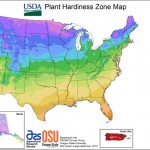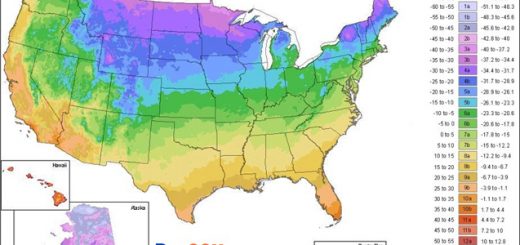New USDA Plant Hardiness Zone Map
 The USDA has just come out with a new Plant Hardiness Zone Map. This map was last updated in 1990, and now about half the cities are in a warmer zone than before. Some see this as a reflection of global warming. What does this mean for you?
The USDA has just come out with a new Plant Hardiness Zone Map. This map was last updated in 1990, and now about half the cities are in a warmer zone than before. Some see this as a reflection of global warming. What does this mean for you?
How will the new USDA map effect vegetable gardening?
In my opinion, it won’t. According to the USDA website:
The 2012 USDA Plant Hardiness Zone Map is the standard by which gardeners and growers can determine which plants are most likely to thrive at a location. The map is based on the average annual minimum winter temperature, divided into 10-degree F zones.
This hardiness zone map is all about how cold it gets in the winter. But as gardeners, we reference average frost dates–the date that, according to historical records, it’s unlikely to freeze and kill our vegetable seedlings. My Planting by Color schedule (available via my downloadable e-book and on the Planting By Color website) is entirely based on average frost dates. Unless these warmer winter temperatures translate into earlier average frost dates, this does not change when we plant our gardens.
“Hardiness” is about how well plants can grow in cold conditions. With the new zones you might find that plants that previously could not survive the colder temperatures can now overwinter and continue to grow. This is important when you’re planting trees, bushes, and perennials. But most vegetable gardeners replant every year (either from extreme cold or warm temperatures), so it doesn’t really effect us.
So for now, sit back and relax. Unless you’re worried about global warming and see this as evidence. In that case, grow a garden and reduce your carbon footprint!






The prices are different depending on the area and availability of products. Some ideas can be found here, but prices change it it’s hard to keep updated!
how much should it cost to fill one 4×4 bed with the soil mix?
do i have to to use 5 different kinds of compost?